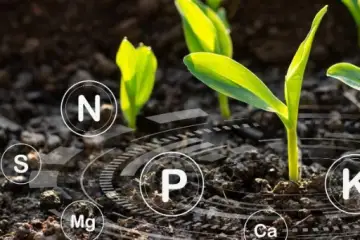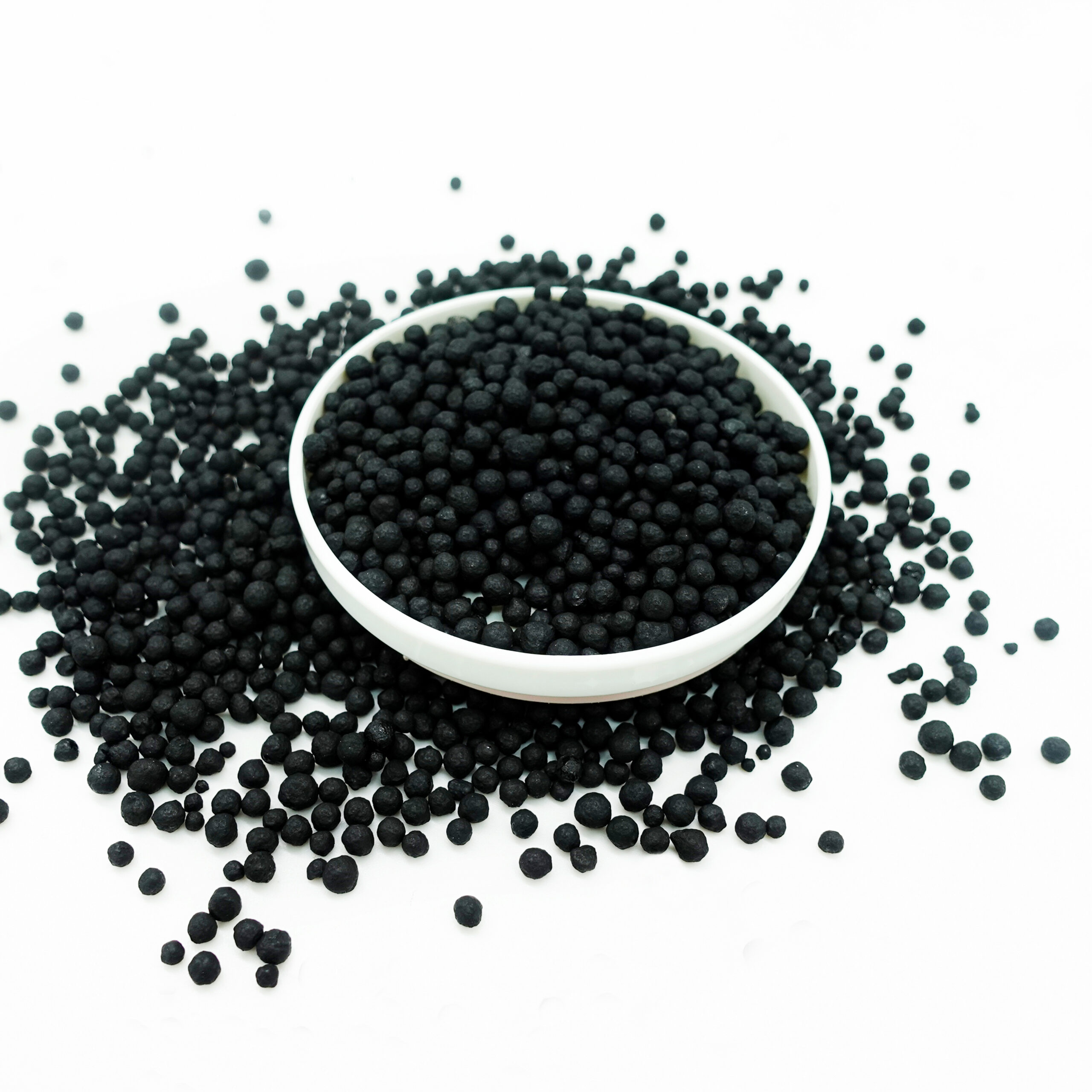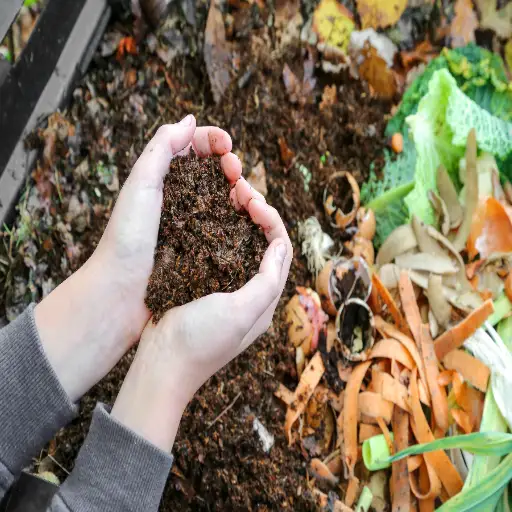Introduction to Soluble Organic Fertilizer
Water-soluble organic fertilizer is a type of fertilizer that can be dissolved in water and is derived from organic sources. These include plant extracts, compost, and animal manure. These organic options are different from synthetic fertilizers because they do not contain any inorganic substances but have been processed so as to be soluble in water, which makes nutrients readily available for plants.
There are several advantages to using soluble organic fertilizers instead of traditional, inorganic ones. Firstly, they improve soil structure and increase its ability to retain moisture. As Dr. Elaine Ingham states “they enhance the biological health of soils which is necessary for sustainable agriculture”. Secondly, they provide slow release nutrition which does not burn or overwhelm plants like chemical fertilisers can through concentrated doses.
In addition, soluble organics are also more environmentally friendly compared with their synthetic counterparts. They reduce the risk of eutrophication caused by runoff, which is a common problem associated with synthetic fertilisers. Furthermore, these types promote carbon sequestration within soils, thereby reducing reliance on petroleum-based products and hence lowering farms’ carbon footprints.
Another benefit of soluble organic fertilizers is their ability to support soil biodiversity. Not only do they feed plants, but also other organisms like earthworms, which play important roles in maintaining fertile soils rich in humus content. Thus, this method conforms with the principles of organic farming while encouraging sustainable agricultural practices that foster environmental conservation and long-term soil productivity improvement.
To sum up, there are many reasons to opt for using soluble organics over conventional non-organic alternatives, especially if you care about the future of your garden or farm!
Understanding How Soluble Organic Fertilizers Work
Soluble organic fertilizers function by having the organic matter decompose and slowly let out nutrients in a plant absorbable form. These are broken down through soil microorganisms which convert them into simpler inorganic compounds. Dr. Linda Chalker-Scott from Washington State University states, “Nutrients are released from organic fertilizers according to how much biological activity occurs within soils; this is influenced mainly by temperature and moisture levels.” Nutrients move uniformly with nature’s growth patterns thereby preventing leaching.
Fish emulsion, seaweed extract, or processed animal manure, among other things, all make up components for soluble organic fertilizer products—these being derived from natural sources. Such products should be treated so that they become water-soluble, i.e., able to dissolve fast when mixed with water, thus releasing nutrients immediately available for use by plants. Quick availability of nutrition is necessary here since it feeds rapidly growing plants while also allowing precise control over where and how much food can be supplied through irrigation systems.
Being ‘organic’ means that these types of fertilizers originate from carbonaceous substances that not only ensure sustainability but also contribute towards increasing soil humus content. As put forward by Dr Jeff Moyer, who is the Chief Executive Officer at Rodale Institute, “Organic fertilizers do more than just feed plants; they feed soils too.” With time such an approach improves fertility levels within soils thus promoting overall healthiness among crops -this differs greatly from synthetic counterparts which tend to destroy structures within soils leading to poor microbial activity besides reducing their biological vitality.
In summary, we can say that the effectiveness displayed by soluble organic fertilizers lies behind what they contain, as well as certain ecological transformations taking place underneath our feet.

Selecting the Right Soluble Organic Fertilizer
To choose the best soluble organic fertilizer for your garden, you need to consider several things. The first thing is nutrient content which is usually indicated as N-P-K (nitrogen, phosphorus and potassium). Make sure these figures match with what your plants require. You should carry out a soil test before applying any fertilizer so that you know which nutrients are lacking in your soil.
Another factor to consider is the source of the fertilizer. Different organic materials affect soil acidity and microbial life differently. For example, fertilizers made from animal manure generally have higher nutrient content but may also contain salts that can be detrimental to soil organisms if used excessively, while plant-based ones like seaweed extracts offer lower levels of nutrients but are usually safer and friendlier to soils.
Moreover, solubility matters too especially in hydroponic systems or foliar applications where quick availability of nutrients is required. The way an organic material has been processed can determine how fast it dissolves hence its effectiveness.
In addition, when looking for top products, it’s good to check user reviews against scientific backing. There are those brands that have received many positive comments, such as Sea Magic Seaweed Extracts and Fish Hydrolysates. These products release their elements rapidly, making plants more vigorous, and thus, resistance against stress increases.
Sea Magic Seaweed Extract is derived from seaweeds, rich in micronutrients and growth hormones necessary for healthy plants’ lives. This product also helps them build strong immunity against diseases besides improving the absorption rate of other essential substances that crops need during their growth stages.
On the other hand, Fish Hydrolysate provides nitrogen, which promotes leafy growth while enhancing soil structure due to its high amino acid content. This increases activity levels among microorganisms living within it.
Finally, people who farm different kinds of crops should consider various crop needs, ease of application, and environmental conditions prevailing around them during the farming season. Organic gardening forums or agricultural extension service testimonials, together with other people’s opinions, may help one know which of these two types of fertilizers is more effective and reliable in their specific situations.
The choice of a soluble organic fertilizer should be based not only on plants’ immediate nutritional requirements but also on long-term considerations for soil health. Therefore, select a product that is consistent with your farming practices and environmental conservation goals so as to achieve balanced crop growth and sustainability within the entire system.
Application Techniques for Soluble Organic Fertilizer
When using soluble organic fertilizers, it is very important to adapt the application methods to different types of plants for better growth and nutrient uptake. Leafy vegetables and flowering plants have diverse nutritional needs and absorption mechanisms.
For instance, leafy vegetables such as spinach or lettuce which require high levels of nitrogen for growth can be effectively fed through leaves by the use of fish emulsions among other liquid organic fertilizers that are rich in nitrogen. This enables them get all necessary nutrients through their leaves directly thus promoting vigorous growth. However, one should consider diluting too much because stronger solutions could lead to burning leaves.
On the other hand, flowering plants need a balanced N-P-K fertilizer that supports both leaf production and blooming. For example seaweed extracts can be applied on soil surface or sprayed onto leaves (foliar spray) to enhance flowers opening and root development. Timing matters here; early morning or late evening applications reduce evaporation risk while increasing absorption rate.
The seasons and stages of plant growth also dictate when and how often soluble organic fertilizers should be applied in terms of timing. During active growing , most plants would require frequent feeding, say every 4-6 weeks, but inactivity during late fall/early winter calls for fewer amounts lest there’s excess build-up within soils, thereby interfering with natural dormancy induction in addition to microbial activities suppression by such an environment.
Spring is a crucial season for these types of manures especially when plants start breaking their sleep periods. It could be done early to boost new shoots formation plus provide enough energy resources needed by them at this stage when they’re just about getting into full swing ; however care must be taken not overdo it since young ones might not withstand heavy doses thus gentle diluted mixtures are recommended instead.
Summer, on its part, requires regularity throughout all reproductive phases due to the rapid growth rates experienced during those times. However, temperatures together with rainfall amounts may necessitate slight adjustments since higher heat levels can enhance nutrient absorption speed.
To sum up, efficient utilization of soluble organic fertilizers demands knowledge regarding specific plant requirements, seasonal variability, and suitable application approaches. Gardeners or farmers who follow these guidelines will ensure that their crops are supplied with necessary nutrients at appropriate times, thereby promoting healthy growth and improving yields.

Maximizing Plant Health with Soluble Organic Fertilizer
Soluble organic fertilizers are crucial for plant health and disease resistance by providing balanced nutrition and supporting beneficial soil microorganisms. The nutrient uptake efficiency of plants is enhanced by these fertilizers necessary for establishing their natural defense mechanisms against diseases caused by pathogens. “Organic fertilizers enhance the soil microbiome which makes the soil ecosystem stronger thus it can suppress diseases from harmful organisms naturally,” says Dr Robert J Kremer, a microbiologist at US Department of Agriculture (USDA).
The organic matter in these fertilizers also helps with soil structure improvement, leading to higher water retention as well as aeration levels, thereby promoting healthier soils where root systems thrive best – this is key in preventing root rot, among other fungal infections that attack plants. Moreover, some humic acids found within organic fertilisers together with other natural growth hormones can act as root stimulants while at the same time boosting immunity response of plants.
Several successful trials have been carried out using soluble organic fertilizers to improve crop yields and plant health. For instance, according to a report published by Cornell University, when fish emulsion was used as fertilizer on tomatoes, 20% more fruits were produced compared to those grown using synthetic products, and they suffered less from common blights and leaf spots.
In another example, such benefits were realized after seaweed-based organic manures became adopted for use within Boulder’s community gardens, where vegetable resilience towards climate change impact increased significantly alongside overall output quantities achieved but also noticed during periods of mild droughts experienced together with fluctuating temperatures recorded over the years.
These achievements indicate how important it is to incorporate soluble organic fertilisers into our daily gardening routines based on different individual case studies. They not only support sustainable farming practices but also make crops stronger hence resistant against pests and diseases brought about by adverse weather conditions like heat waves or cold spells
Troubleshooting Common Issues When Using Soluble Organic Fertilizers
Soluble organic fertilizers need careful management to avoid over- or under-fertilization, both of which can damage plants. Under-fertilization leads to nutrient deficiencies which cause stunted growth and reduced yield while over-fertilization disrupts soil microbiology through nutrient burning and increases environmental pollution.
To address under-fertilization, it is important to carry out regular soil tests to monitor nutrient levels and adjust your fertilizing strategy as necessary. For example, if nitrogen deficiency signs such as yellowing leaves become visible on plants, then one can consider increasing the application rate of a nitrogen-rich organic fertilizer like fish emulsion.
On the other hand, signs showing an excessive supply of nutrients include white crusts on the soil surface resulting from salt accumulation within it, as well as burned or dried-out leaf edges. This can be countered by cutting down on the frequency and concentration of fertilizer applications while increasing irrigation to flush away extra nutrients. It also helps a lot when more compost is incorporated because this balances nutrient levels and enhances soil structure.
Plants usually give visible indications that may guide one when adjusting the amounts of fertilizers applied. For instance, slow growth or pale leaves often indicate a need for more nitrogen, whereas poor flower and fruit development may suggest a lack of phosphorus.
When making adjustments in the amounts of fertilizer applied, always take into account different plant requirements at various growth phases. During the early growth stage, for instance, plants generally need higher amounts of nitrogen to promote leaf development, but as they move towards blooming and fruiting reduction, Nitrogen, favoring Phosphorus and potassium, can enhance healthier reproductive growth.
Furthermore, implementing the split application method, where the total amount is divided into several smaller applications throughout the growing season, ensures steady supply without risk of overconcentration at any given time; thus, availability is ensured when required most, leading to optimal growth rates and, hence, productivity peaks.
By closely watching how plants respond and then modifying actions based on such findings, gardeners and farmers can make good use of soluble organic fertilizers, which will keep their plants healthy while increasing yields, thus maximizing the benefits of organic fertilizer strategies.
Conclusion
Encouraging the adoption of soluble organic fertilizers is a step towards more sustainable and environmentally friendly farming practices. Apart from providing essential nutrients in an easily absorbable form for plants, these fertilisers also improve soil health and promote biodiversity thereby creating a more sustainable agricultural ecosystem.
Various studies have shown that soluble organic fertilizers are effective in increasing crop yields and enhancing environmental conservation. By switching to these natural alternatives, farmers and gardeners can reduce their chemical usage while improving soil fertility, which supports healthier surroundings.
To sum up, strategic application of soluble organic fertilizers offers workable solution towards higher output without compromising ecological balance. The hope is that many individuals and communities will start embracing long term nature-friendly manure application methods within their farming systems thus ensuring greener earths for our children’s children.
Here are some scholarly articles and studies on soluble organic fertilizers :
- Effects of Soluble Organic Fertilizer Combined with Inorganic Fertilizer on Greenhouse Tomatoes with Different Irrigation Techniques – This study explores the optimal application rates and irrigation methods for using soluble organic fertilizers in combination with inorganic fertilizers to enhance the growth and yield of greenhouse tomatoes.
- Effects of Organic Fertilizers on Yield, Soil Physico-Chemical Properties, and Soil Microbial Community Diversity of Brassica rapa var. Chinensis – This research examines how different organic fertilizers affect the yield of Brassica rapa and the soil’s physical and chemical properties.
- Effects of Liquid Organic Fertilizers on Plant Growth and Rhizosphere Soil Characteristics of Chrysanthemum – This article discusses the impact of various liquid organic fertilizers on the growth of chrysanthemums and the properties of the rhizosphere soil, highlighting how different organic sources can influence plant development and soil health.
- Liquid Organic Fertilizers for Sustainable Agriculture: Nutrient Uptake of Organic versus Mineral Fertilizers in Citrus Trees – This study compares the performance of vegetable-based and animal-based liquid organic fertilizers with mineral fertilizers on citrus trees under drip irrigation, focusing on nutrient uptake and growth effects.
- The Effects of Chemical and Organic Fertilizer Usage on Rhizosphere Soil in Tea Orchards – Focusing on tea orchards, this research investigates the long-term effects of organic versus chemical fertilizers on soil properties and tea quality, using advanced soil and plant analysis techniques.







